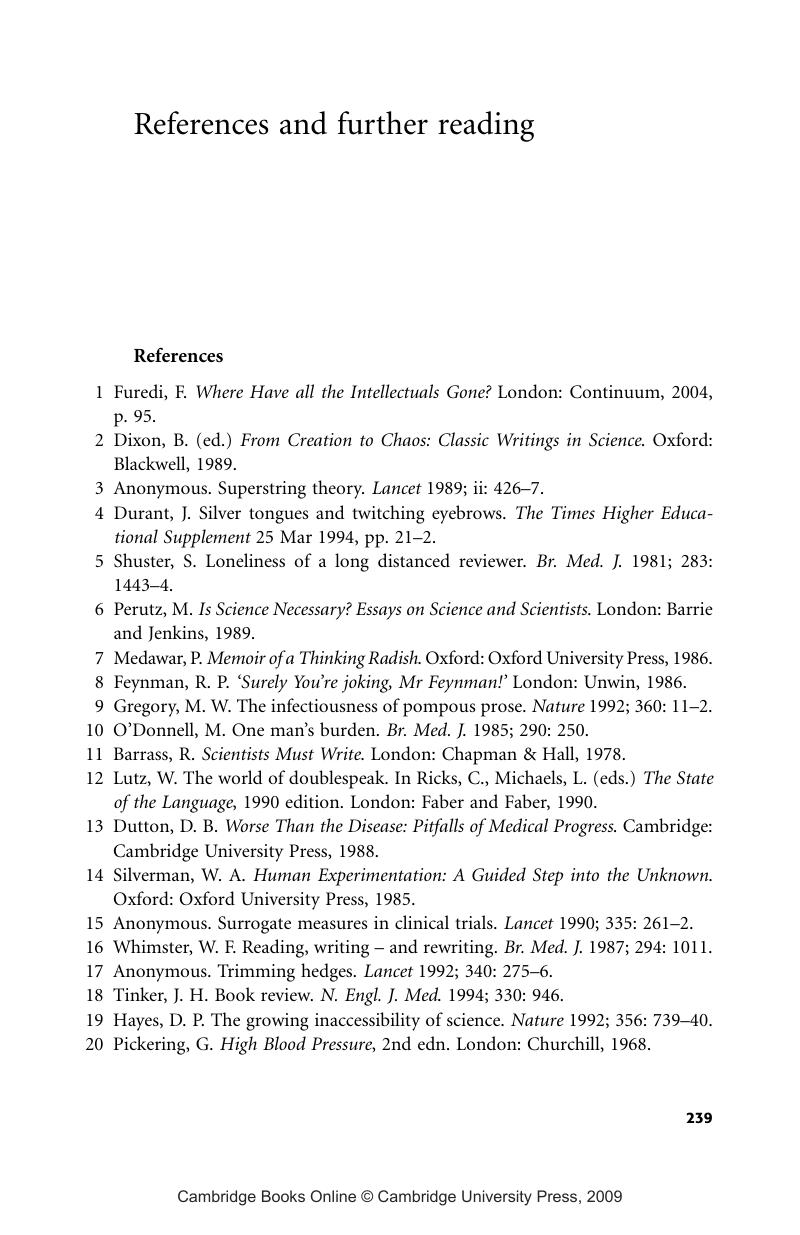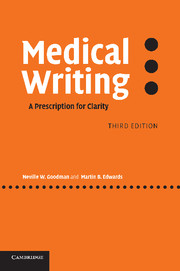References and further reading
Published online by Cambridge University Press: 23 November 2009
Summary

- Type
- Chapter
- Information
- Medical WritingA Prescription for Clarity, pp. 239 - 243Publisher: Cambridge University PressPrint publication year: 2006



